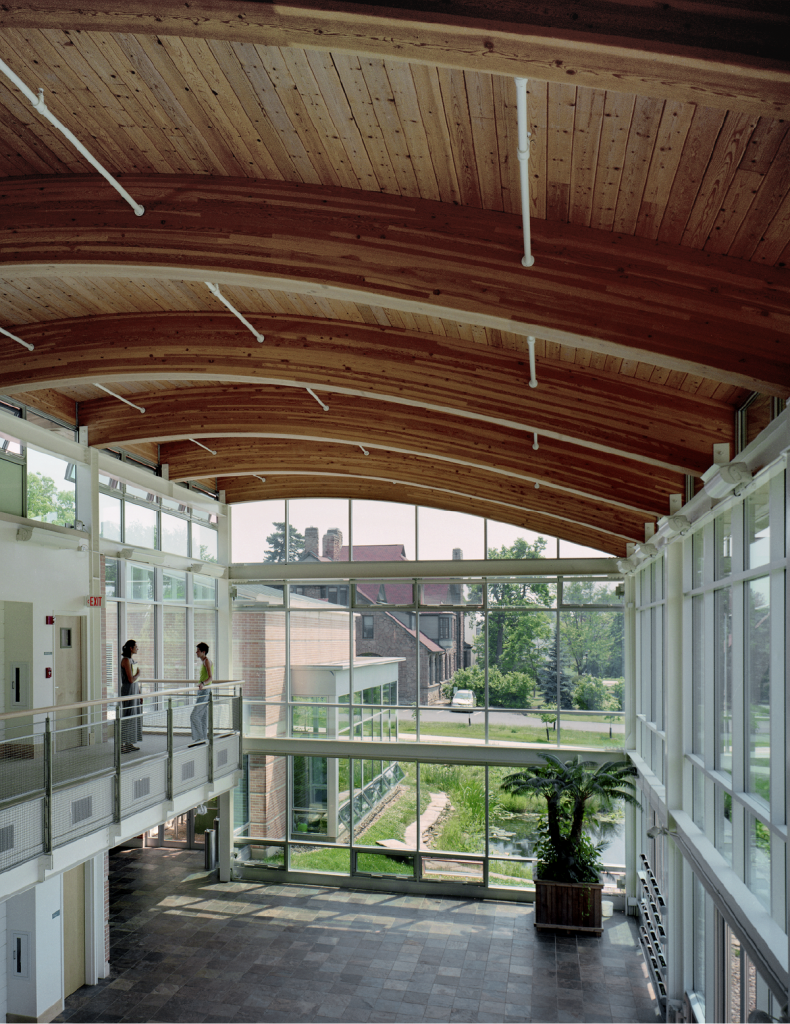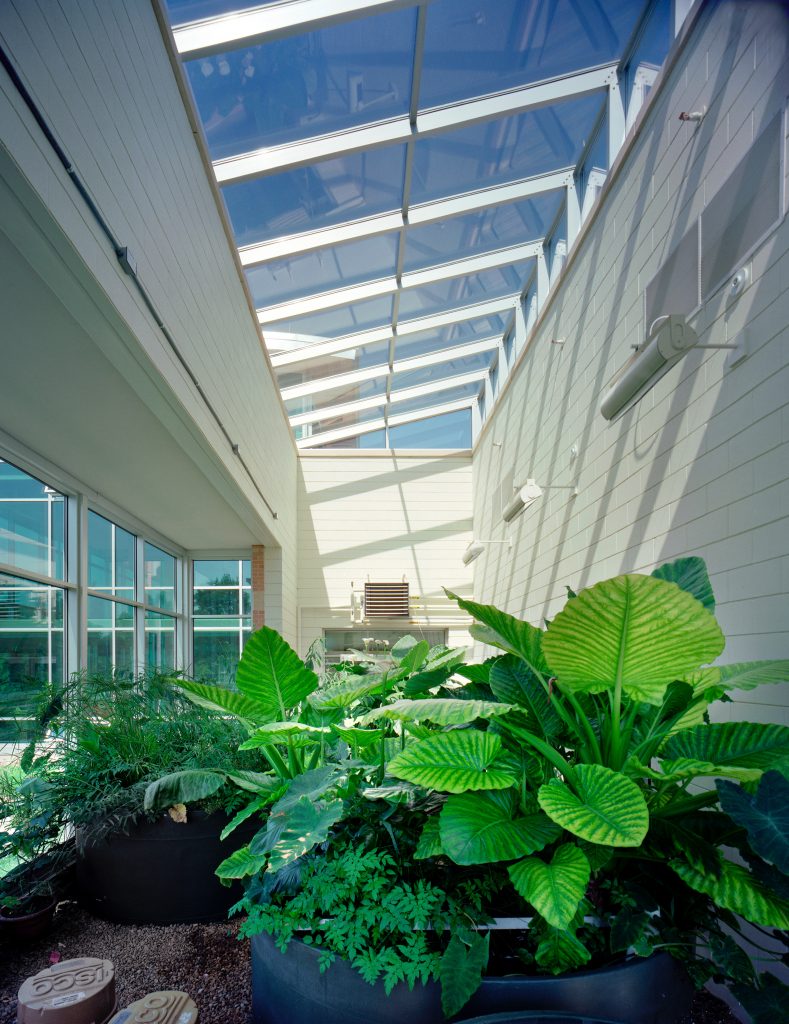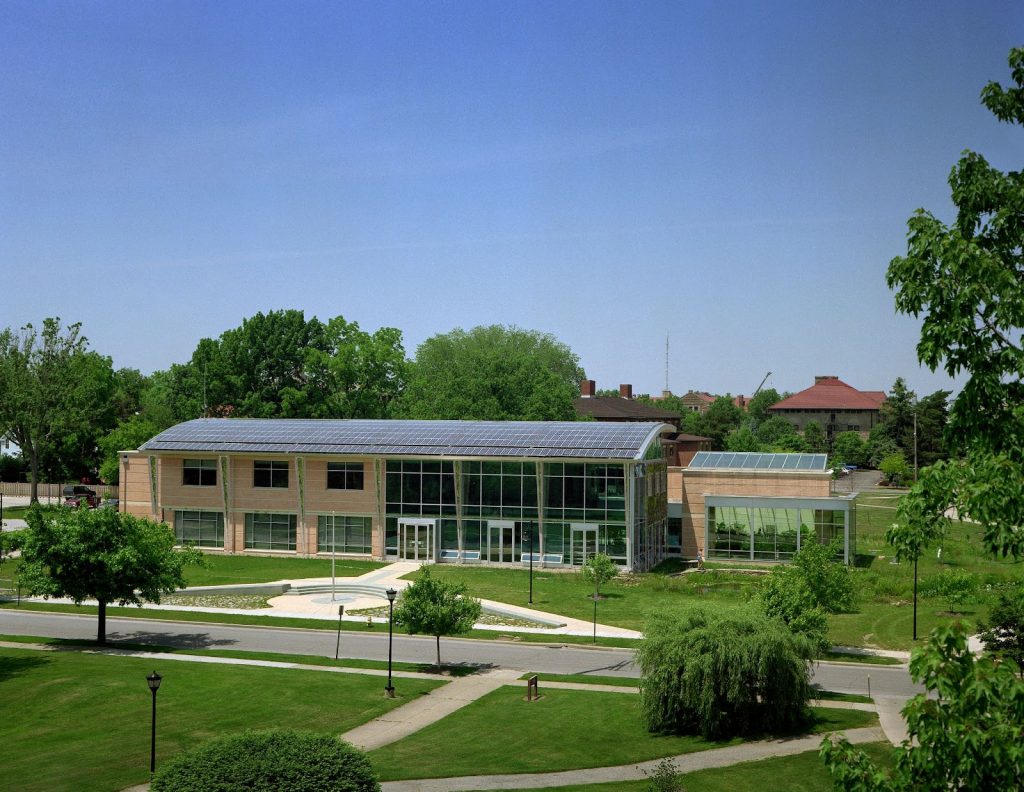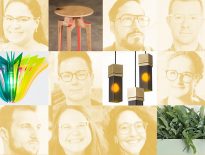How Buildings Teach
Do you remember the first time you entered a building and it changed you? Perhaps it was a building that brought on a sense of awe. Perhaps it was intimidating. Perhaps it looked and felt and smelled like something you’d never experienced before.

I have come to understand that buildings change us in many ways. Buildings teach us things, both tacitly and actively. When I was 18 years old, I became one of the first students of a trailblazing building on my campus. I went to Oberlin College in Ohio; I went to study this building. The Adam Joseph Lewis Center opened the year I started college, and it was an unprecedented experiment at that time. Built to produce more clean energy than it needs, to clean all of its own wastewater through an elaborate constructed wetland called a Living Machine, and to touch the earth lightly. Indeed, it was built to give back more than it took. It was the brainchild of my mentor and advisor, Dr. David Orr, an environmental educator and writer who was determined to prove that the act of design and construction could serve as its own pedagogy. He wrote an essay describing his intentions for the project in 1993, Architecture as Pedagogy:

The process of design and construction is an opportunity for a community to deliberate about the ideas and ideals it wishes to express and how these are rendered into architectural form. What do we want our buildings to say about us? What will they say about our ecological prospects? To what large issues and causes do they direct our attention? What problems do they resolve? What kind of human relationships do they encourage? These are not technical details, but first and foremost issues of common concern that should be decided by the entire campus community. When they are so decided, the design of buildings fosters civic competence and extends the idea of citizenship. ….
These questions cannot be answered without engaging issues of ethics. How are building materials extracted, processed, manufactured, and transported? What ecological and human costs to various materials impose where and on whom? What in our ethical theories justifies the use of materials that degrade ecosystems, jeopardize other species, or risk human lives and health? Where those costs are deemed unavoidable to accomplish a larger good, how can we balance ethical accounts?
These questions were raised at Oberlin for the building that would rise on campus in the years to come, as Orr worked with the design team from William McDonough + Partners on the design and realization of the project.

The Lewis Center is now a profound learning experience for thousands of people and generations of students who learn and engage with the building. It is a lesson in what we are capable of, how we can live in balance with our communities, our ecological resources, and how that has incredibly positive impacts on our health, our learning, and our relationships with each other. It is a teacher who will never retire, it is a book in the physical “public library” of a campus landscape. Just walking into the building and learning how it works shows the visitor that a regenerative future is possible, and indeed, it is here in this small space in this particular community, because they made it so. Today, the Lewis Center is a grandmother of a family tree of buildings that have emerged all over the world that are teaching similar lessons.

The Lewis Center was completed before the Living Building Challenge was launched. At its heart, the Living Building Challenge and all the programs in its orbit are driven by the idea that every building has the potential to be a dynamic hub of learning — for its users, owner, stakeholders, community, design and construction team, and others. Each building can teach us how to use less energy to heat and cool our buildings, how to use non-toxic materials to build, and how to landscape without potable water. But it can also teach us about how to live in balance with the world around us, it can teach us about native plants and animals, and ecosystems. It can teach us how to care for each other just through the act of buying and making things. It can teach us that our opinions matter, that our values matter, and that we have a hand and a responsibility in the infrastructure around us.
To learn more about the Living Village project, join our next Living Future Member webinar on April 2nd.
This piece was adapted from a talk that Lindsay Baker delivered at Yale University’s Divinity School in 2023. The School is engaged in a Living Village project.
Cover photo: © Barney Taxel, courtesy William McDonough + Partners.


